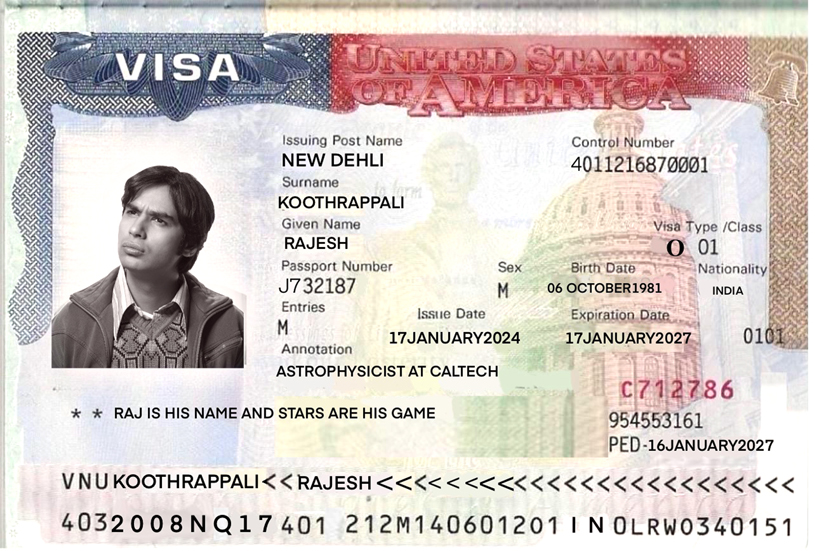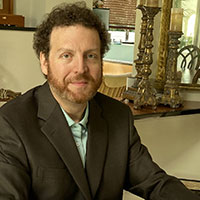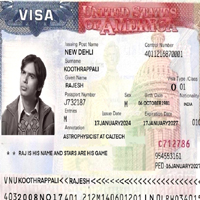Did Raj from the Big Bang Theory ever get his green card

“Raj is his name and stars are his game”.
Many of you might recognize Dr. Rajesh “Raj” Koothrappali as a fictional character from the popular show The Big Bang Theory. I decided to use a fun and creative way to explain what immigration options might have been available for this extraordinary astrophysicist. His hypothetical immigration story is not all that uncommon, and the show makes many references to immigration from India.
“Raj was born in New Delhi, India in 1981. At the young age of 5, he “discovered” a celestial object which later turned out to be the moon. Fortunately, he would go onto bigger and better things. For college he went to Cambridge University in England to study astrophysics.”
Raj then earned his Ph.D. in astrophysics from Cal Tech. He likely used an F-1 student visa while studying in his doctoral program. After graduation, how would Raj stay in the U.S. and work? The show is rather vague on Raj’s immigration path and while it has many humorous situations involving his visa, they are mostly exaggerated for comedy and/or are inaccurate. Here is where I like to speculate as a fan of the show and practitioner of immigration law.
Raj’s easiest path to employment after graduation from Cal Tech would be via OPT (Optional Practical Training). Dr. Koothrappali could have used his 1 year of post completion OPT to work for up to 12 months. Since astrophysics is clearly a STEM field (Science, Technology, Engineering, Mathematics), Raj could then get another 2 years of STEM OPT via the 24-month STEM extension. Essentially, Raj could work for up to 3 years after graduation while still on his original F-1 student visa.
The show hints that Raj may have had an H-1B visa. If so, Caltech would have had to sponsor Raj and probably would have had in-house university attorneys help with the H-1B or hire outside legal counsel for the H-1. However, H-1Bs have many other challenges. No, it wouldn’t be hard to prove that a researcher in astrophysics would be a specialty occupation. No, it wouldn’t be hard to prove that Caltech is a legitimate employer and that they have the ability to pay him the prevailing wage. Yet, Raj would still have to be selected in the H-1B lottery even if his U.S. Ph.D. gave him a better chance.
I believe that Raj was a top scientist who was special enough to get an O-1 extraordinary ability visa. An O-1 visa is the Caltech of non-immigrant visas. There is no lottery, no annual cap, no long labor certification, and O-1s can be renewed multiple times but they never will directly lead to a green card. Remember, O-1s are still non-immigrant visas.
Once Raj discovered 2008 NQ17 the planetary object beyond the Kuiper belt, which he named “Planet Bollywood”, he was included in People magazine’s “30 Visionaries Under 30 to Watch”. This award would have convinced Cal Tech to sponsor him for an O-1 visa and the award was an instrumental piece of evidence in obtaining the O-1. O-1’s are essentially the Hollywood of U.S. visas. Still, why didn’t Cal Tech look into EB-1B green card sponsorship as an outstanding researcher/professor? Why didn’t Raj self-petition for an EB-1A or an EB-2 NIW green card?
If Raj had received proper legal advice he likely would already have his U.S. green card or would be well on the way to obtaining one. Even his friend/colleague, Dr. Sheldon Cooper might have pointed out that Raj should have contacted an immigration attorney or at least relied on Sheldon’s knowledge of everything including U.S. immigration. Likely it made for a better show if they kept the dry immigration details out of the dialogue and instead inserted more random scientific or pop culture references simply for humor.
Raj’s story, while fictional, is a testament to the journey of many international students and researchers. His story is a blend of common immigration pathways for academics and Raj’s character from the show. His dedication to his field of astrophysics and the challenges he overcame highlight the resilience and contribution of immigrants to the scientific community. In real life, each individual’s U.S. immigration journey can vary greatly based on personal circumstances, legal advice, and current immigration policies.
This article does not constitute a solicitation or provision of legal advice and does not establish an attorney-client relationship. The answers provided should not be used as a substitute for obtaining legal advice from an attorney licensed or authorized to practice in your jurisdiction. You should always consult a suitably qualified attorney regarding any specific legal problem or matter on time.
About Author
 U.S. Immigration Attorney Seth Finberg is a 2005 graduate of the University of Georgia School of Law. Seth is a member of the Georgia Bar, the American Immigration Lawyers Association (AILA), and serves on the Business and Investment Committee for the South Florida chapter of AILA. Mr. Finberg is the owner and founder of South Florida based Finberg Firm PLLC and he represents clients nationwide and internationally in business, employment, and investment immigration. He can be reached by phone at (305)-707-8787 or by email at seth@finbergfirm.com or www.finbergfirm.com.
U.S. Immigration Attorney Seth Finberg is a 2005 graduate of the University of Georgia School of Law. Seth is a member of the Georgia Bar, the American Immigration Lawyers Association (AILA), and serves on the Business and Investment Committee for the South Florida chapter of AILA. Mr. Finberg is the owner and founder of South Florida based Finberg Firm PLLC and he represents clients nationwide and internationally in business, employment, and investment immigration. He can be reached by phone at (305)-707-8787 or by email at seth@finbergfirm.com or www.finbergfirm.com.































